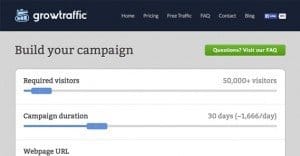The Ultimate Guide to Promoting Your New Product

When it’s time to launch a new product, a lot starts to happen all at once. Your development is nearing completion but your marketing hasn’t quite kicked into high gear. You have a lot on your plate, a lot to manage, and it’s all too easy to let something slip through the cracks. To make sure your product launch and promotion goes smoothly, take this framework and adapt a marketing plan to suit your needs.
Determine Your Market
The first thing you need to do is pin down your target market. Part of this work should already be done; after all, you don’t start creating a product without knowing who it’s for. Take the time to refine your target market in any way you can. Is it targeted towards men? That’s good to know. It’s better to know that the most interested men will be between the ages of 20 and 30, and that they’ll tend to be handymen without long-term relationships. Of course, some of this information won’t be available until you can actually see who is buying. You’ll need to make educated guesses and then refine them as you learn more.
Define Sales Goals
Your sales goals should be specific, and they need to be goals you can measure. Don’t say something like “sell enough to turn a decent profit.” Say something like “Sell 100 units to users within the first month.” You will need to examine the type of product, your market, your competition, your price point and your production in order to set these goals. The point of pinning them down is to have something to shoot for, not to have a finite measure of the success or failure of your product. You can always adjust your sales goals to meet reality, as long as doing so doesn’t mean your business fails completely.
Note Important Sales Activities
Sales activities should be a list of anything important you need to remember for your marketing and sales, but which aren’t necessarily part of the everyday marketing. You can add “Facebook marketing” to the list if you want, but you should be doing that anyway. Instead, use this space to list trade shows, a specialized website or time-limited ad campaign and the like. Things you might not otherwise remember. If you don’t already have a marketing engine in place, dedicate a section to the social media and traditional marketing you should be doing regardless of product launch status.
Note High Profile Sales Targets
For some products and in some industries, there are high profile targets you can approach for sales. At the most basic level, setting your sales targets will mean noting whether you’re selling to end users or selling to other businesses. If you’re selling to businesses, for example, consider creating a selection of businesses that would be absolutely killer to contract. Players who, if you succeed, will set your product well on the way to absolute success. It’s important to make sure you aren’t relying on these long shots, however.
Set Deadlines and Time Goals
Part of a successful sales plan is a sales timeline. You can set all the targets and goals you want, but if you set a nebulous deadline like “eventually” you’re going to lose the pressure that drives you to succeed. Some of your time goals will be baked into your sales goals. Sell 100 units in a month is a deadline as well as a goal. Bake your goals into your sales plan and you’ll have the drive necessary to achieve them.
Advertise and Promote
All of the above is about setting up goals and plans. It’s time to put those plans into action. Set up advertising in any way that’s relevant, digitally and offline. Email campaigns, website advertisements, guest posts, press releases, blog posts, social media marketing, PPC ads, landing pages, brochures, billboards, TV commercials – the list goes on and on. Set everything into motion and get the word out, whether you drip-feed a viral campaign or you start with a bang and a product demonstration at a trade show.
Take Preorders
Preorders, when you’re dealing with a physical product particularly, will help you gauge interest in what you have to sell. It will help get some money flowing and some confidence building. It will also help you make sure you have the resources available to meet demand. If you’re working with software or apps, it’s a way to gauge interest, though you don’t need to worry about production, only server infrastructure and capabilities.
Deliver the Goods
Once your product goes live, it’s time to deliver on your preorders. You absolutely need to make sure this phase goes smoothly. A quick delivery time, a flawless customer service presence and a willingness to fix any mistakes will go a long way towards building a reputation. Avoid shipping unfinished or broken products, avoid ignoring customer service requests and do everything in your power to make the launch smooth.
Take Feedback and Refine the Product
Once your initial wave of product has gone out, send messages to your early adopters and ask for their feedback. This will be some of the most valuable feedback you’ll receive in your career as an entrepreneur. Figure out what your users are looking for, what you’re satisfying and what you could be doing better. Don’t strictly focus on the negatives; know what you’re doing right so you can put the wrong into perspective. Take this feedback and incorporate it into developing a patch or a version two, depending on your style of product.
Expand to Wider Markets
After the initial hype has died down and your product has launched successfully, you need to carry on and expand your marketing. Identify people or businesses who may like your product and expand into those markets. Your initial wave should have brought in a few surprises; make use of those surprises to tap additional markets. If you’re lucky, you may find that your initial targeting was off the mark and your new targets are much more lucrative. In most cases, you’re going to be finding diminishing returns, though your returns will still be good enough to support you for years as you grow.
Redefine Sales Goals
Remember those sales goals? Did you meet them? Did you exceed them? Did you fall short of the mark? It’s time to look at those goals and adjust them for the current lay of the land. If you fell short, consider why. Were you reaching for something unattainable, or was there a flaw in your marketing that could have served to reach them when corrected? If you exceeded your goals, did you do it on the power of a lucky hit, or was there more demand than you expected? Adjust the goals and keep moving forward.

 ContentPowered.com
ContentPowered.com






